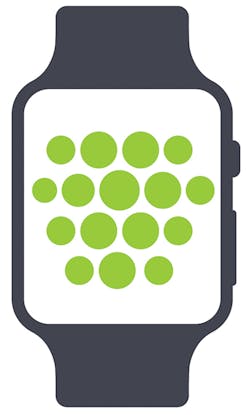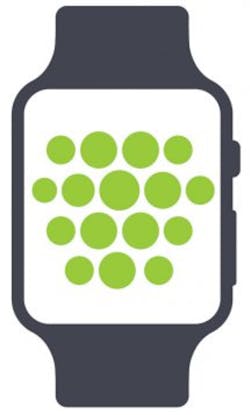It is often stated that 70% of medical decisions are driven by diagnostic testing. As we enter the era of mainstream application of precision medicine, tailored therapeutics, wearables, and artificial intelligence, the importance of diagnostics’ role in medicine will continue to grow and the definition of what constitutes a diagnostic test will continue to evolve. This is encouraging news as the earlier almost any medical condition is detected, the better the outcomes for that patient and their family and the greater the potential for savings to the healthcare system.
Diagnostic testing traditionally has been confined to testing performed directly at the healthcare facility or laboratory—imaging, lab tests, EKGs. The future of diagnostics incorporates these traditional modalities and many more that new technology enables—from medical implants that beam data to a smartphone, to smartwatches that actively monitor vital signs 24/7. Similar to disruptions seen in other industries, the largest diagnostic company of the future may not even have a laboratory. We are already seeing companies, such as Apple and its Apple Watch product, work with the FDA to redraw the regulations regarding what constitutes a medical device as consumer technology begins to routinely monitor a person’s vitals.
Smartwatches and precision medicine
A smartwatch has been demonstrated to do everything from predicting the onset of seizures in patients with epilepsy, to detecting the falls of an elderly adult. Think of a young athlete who wears a smartwatch while playing basketball and suddenly experiences shortness of breath. The smartwatch may detect an irregular heartbeat and alert the athlete to see a doctor. Later at the doctor’s office, the physician makes a diagnosis of hypertrophic cardiomyopathy and orders genetic testing for the athlete’s family and finds multiple affected individuals. From the initial readings of a smartwatch, combined with traditional medicine and advanced genetic testing, conceivably the lives of multiple people within a family may be saved.
From psychiatric disorders to cancer, precision medicine is revolutionizing the practice of medicine. In particular, the myriad applications and explosion of data from molecular diagnostics and genetic testing represents another distinct challenge concerning how to manage this data, determining at which level the data should be retained and how it can be applied most effectively. Children’s hospitals, academic medical centers, cancer centers, and even psychiatrist’s offices are pioneering precision medicine and the application of advanced genetic testing to make mainstream medicine a reality.
Take cancer as an example. For decades, pathologists have been diagnosing cancer using anatomic pathology techniques from extracted tissue obtained through biopsies. But cancer is fundamentally a genetic disease. Solely relying on a stained slide to determine cell morphology of a tumor is the metaphorical equivalent of a mechanic diagnosing car troubles by looking at it—it may have sufficed in the past, but we now know cancer is too complex for that. Just as a mechanic wants to know what the machinery inside the car reveals through an onboard computer, genetics can inform a pathologist of the inner workings of a tumor by providing its unique genetic signature.
Using this genetic information, drugs and treatment programs can be prescribed based not only on the organ from which the tumor was extracted and the shape of the cells, but tailored to specific genetic errors found within the tumor. Healthcare organizations that do not utilize the latest diagnostic technology risk losing their patients to institutions that do. With the explosion of genetic information and biological databases, it is important for any organization that wants to incorporate precision medicine into its portfolio to have a variant knowledgebase. Software tools can help manage these complex and continuously evolving datasets.
The approach described above is the tip of the iceberg when it comes to the future of integrated diagnostics. The power of marrying different diagnostic modalities—clinical testing, anatomic pathology, molecular testing, and imaging with the patient record and population-level data containing aggregated data on similar patients—brings new levels of diagnostic resolution. Combining the individual testing approaches will generate more accurate and earlier diagnoses and provide a more holistic picture of the patient and the most effective treatment. The conversation should not center on the amount of data that a new technology is producing, but on how this data can be best leveraged to empower clinicians with the appropriate diagnostic information and insights.
Better patient outcomes
Imagine if healthcare organizations had the power to stratify their patient population as effectively as advertisers can identify you as a potential candidate for a new minivan because they know you just had your fourth child. The amount of waste a healthcare organization generates would shrink substantially and their operating margins would rise significantly. This is the power of analytics. It is not enough to simply collect and store diagnostic and patient information. Leveraging analytics and population-scale precision and outcomes, data can produce better patient outcomes more cheaply.
Today, a particular treatment may only be effective in 20% of patients but it’s being prescribed to 100% of the patient population with a given condition. That is incredibly wasteful. Worse still, if that medication is contraindicated for a patient, it could lead to devastating and completely unnecessary side effects. Roughly 50% of drugs in the pharmaceutical pipeline today for oncology have an associated companion diagnostic that allows for the drug to be applied to only those individuals that would benefit from it. As healthcare shifts from fee-for-service to value-based medicine, proper analytics will be key in order for healthcare organizations to meet their goals of reducing costs and improving outcomes.
All of the above represents new data types that healthcare organizations need to determine how to best utilize, incorporate into the patient’s medical record, and present in an easy-to-digest manner to already-overwhelmed clinicians. With predicted shortages of specialty physicians and burgeoning workloads combined with the ever-increasing pace of medical innovation, it will be impossible for physicians to keep up with the information on their own. We are no longer limited by technology but rather by our capacity to effectively absorb the information—artificial intelligence will play a key role in our future healthcare system. Physicians will rely on artificial intelligence and machine learning to help process the information and make appropriate diagnoses, recommendations and treatment plans for their patients. Machines won’t replace physicians, but rather assist them as a sort of digital nurse. Computers can incorporate all of the diagnostic testing performed on the patient, combine it with the patient’s symptoms, information from their wearables, search for patterns, and compare it to outcomes from similar patients to help devise the best treatment plan.
Don’t get left behind
It is difficult to predict when some of these technologies will be mature enough for routine healthcare applications. The only certain thing is that technology will not stand still waiting for us to catch up. One of the biggest challenges today is that data is siloed in different systems or incomplete—and hospitals cannot effectively access the data, let alone patients with even more limited access. No organization can adapt to all of this change on its own. Businesses that cater to different portions of the space need to provide hospitals and health institutions with the required tools to help organizations structure it and make sense of the data.
In order to be a healthier society, we need to shift our system from being solely focused on sick care to one increasingly aware of the power of preventative medicine—data can help us get there. Burdened with increasing insurance deductibles and rising healthcare costs, consumers, and patients will demand this information be used to help make them healthier and their treatments more effective and cheaper. Hopefully soon, the conversation will expand to include the rapidly approaching future of prognostic testing.




